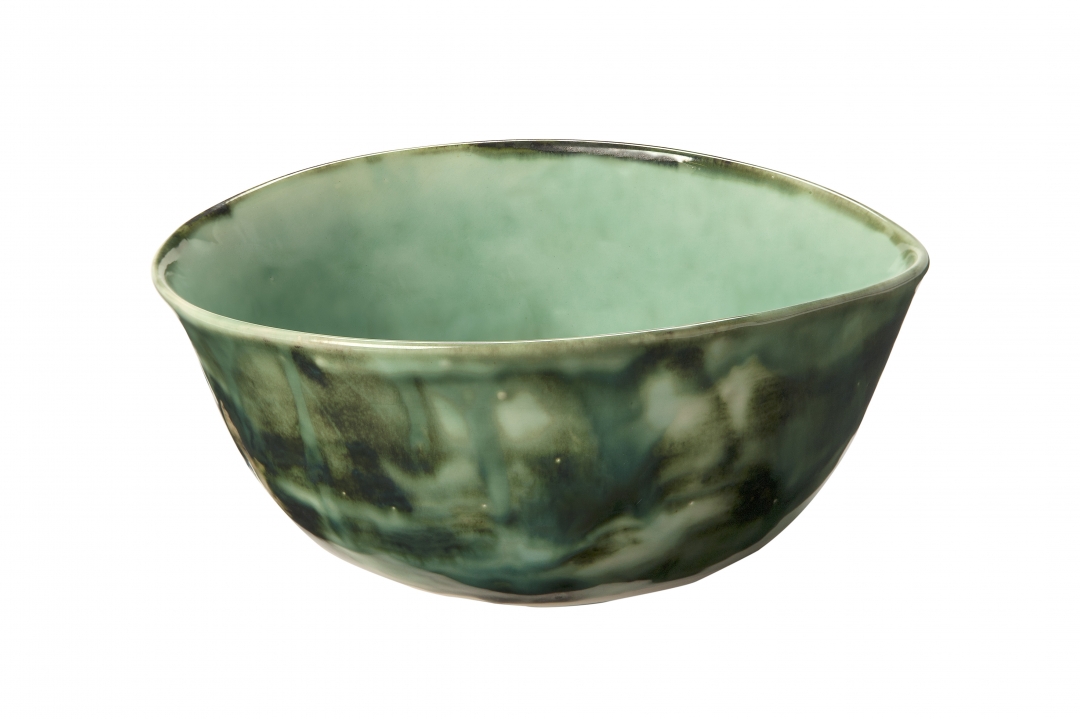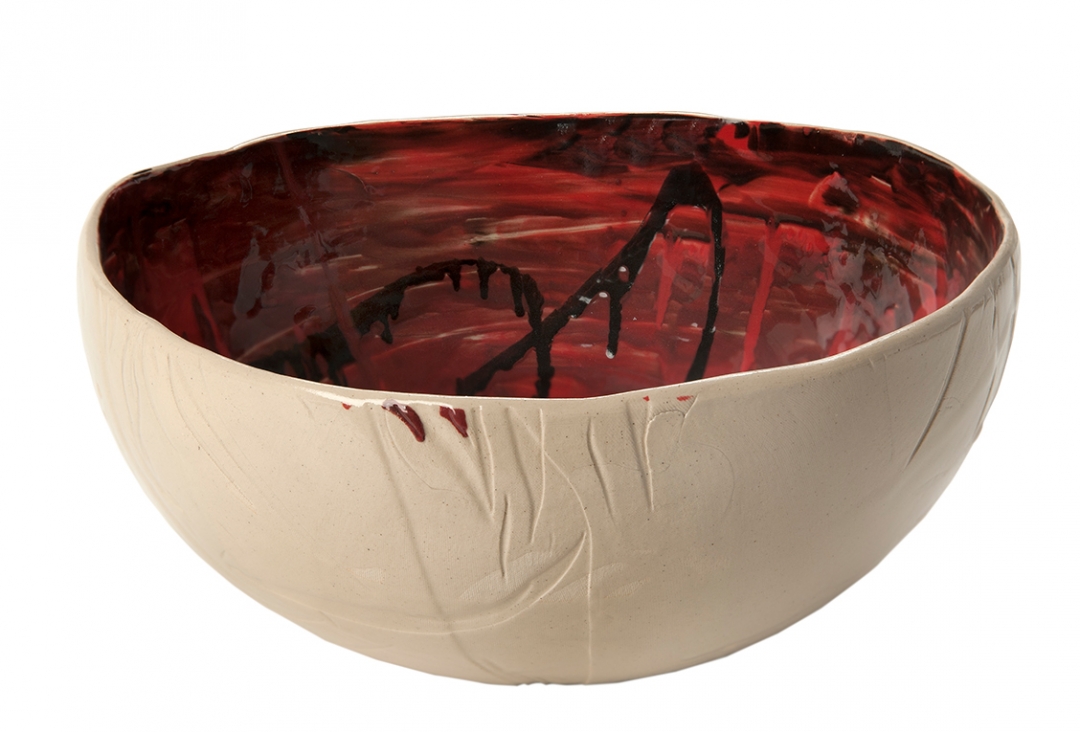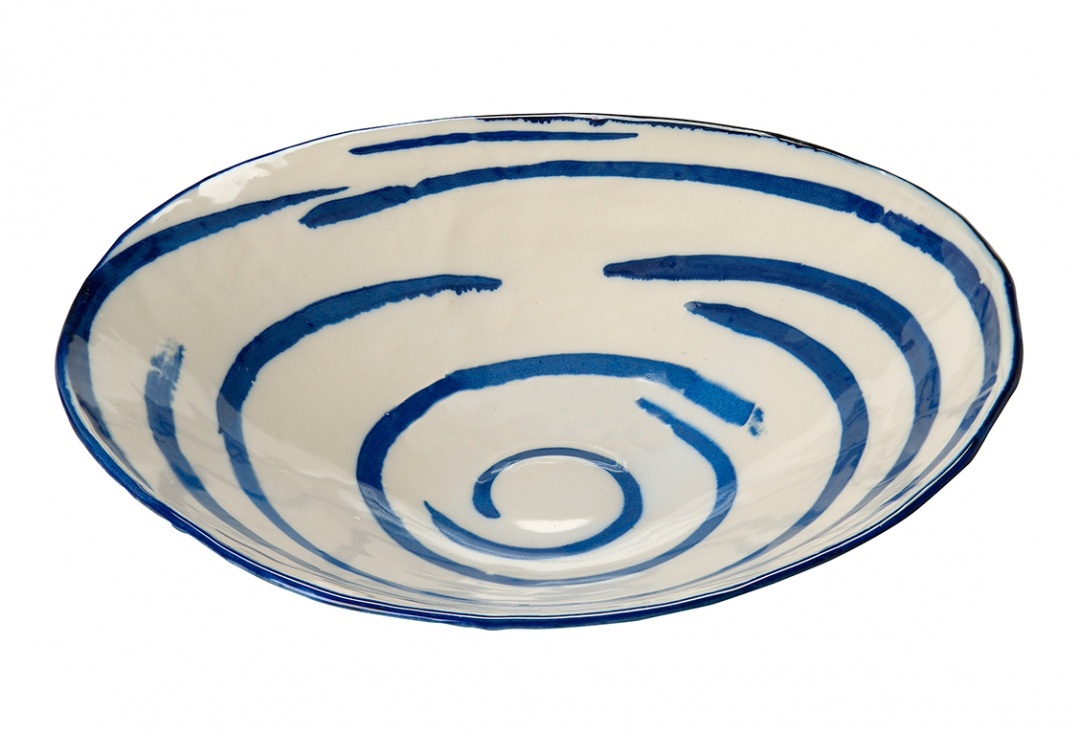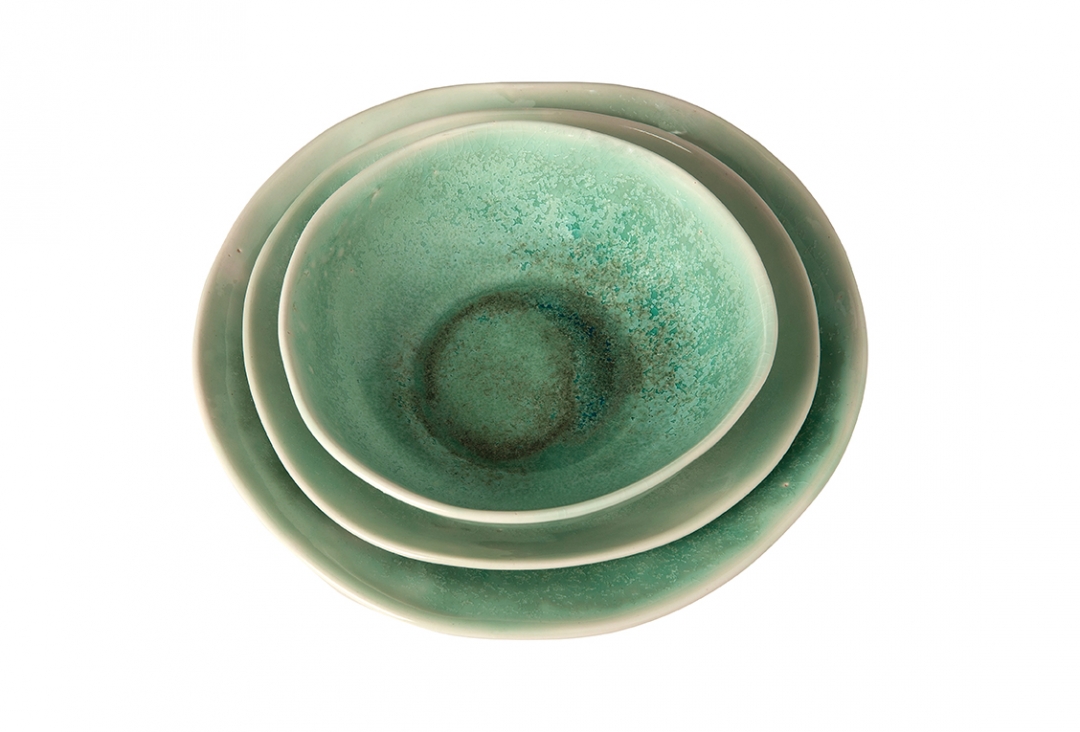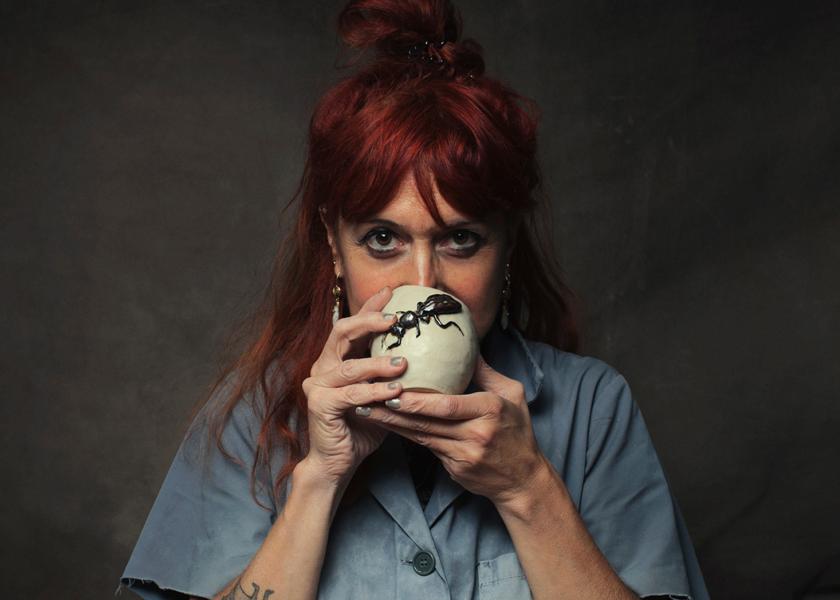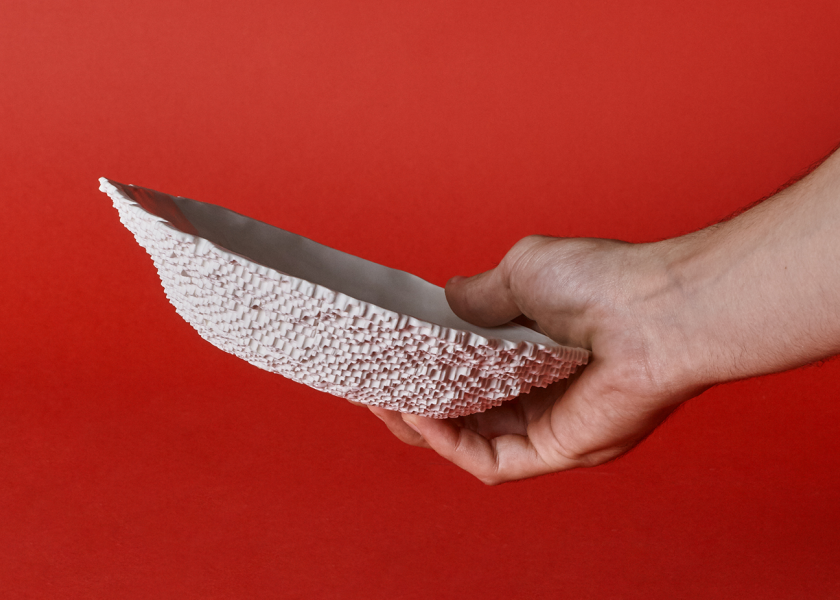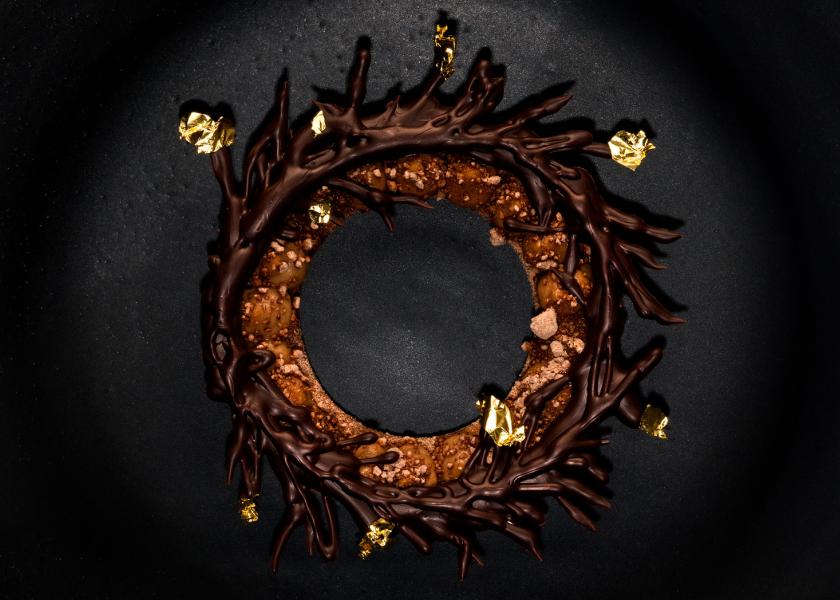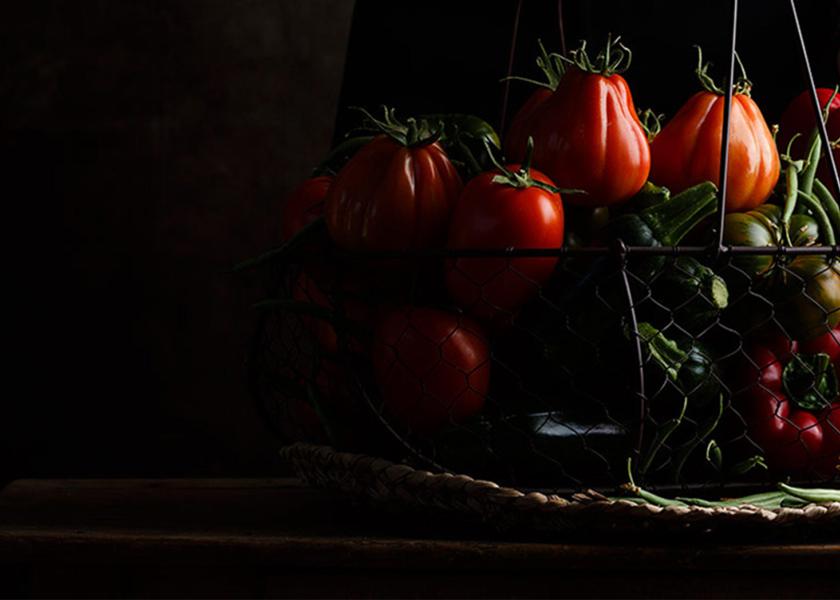Pedro León
Zen Ceramics Conquer Haute Cuisine
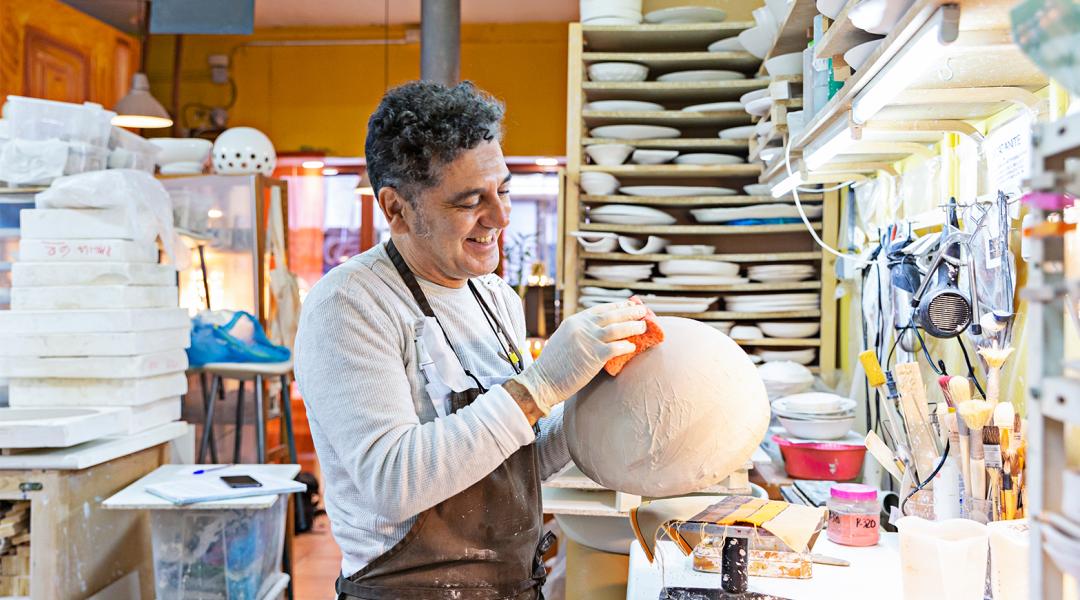
Ferrán Adriá, Paco Roncero, Dabiz Muñoz… Muchos de los grandes chefs de nuestro país muestran las creaciones de la más alta cocina sobre las vajillas de Pedro León. Nos citamos con este artesano —así se define él mismo— en su castizo taller madrileño para hablar con él sobre sus piezas, la técnica del rakú y el creciente interés del universo de la gastronomía por este arte milenario.
Although Pedro León (1962, Tenerife) was born in the Canary Islands, he’s been in Madrid for three decades and his Venezuelan accent is practically intact after years living across the pond. Today, this ceramicist designs plates, bowls and cups at ArteHoy, his workshop located in the neighbourhood of Lavapiés, for several of the most important chefs in the country. Although he’s been working with his spatula and clay since 1996, he’s reached new heights in the last five years, coinciding with the gastronomy boom.
Among clays, glazes and the two giant ovens that bring his pieces to life, León naturally unravels his progress and some of the secrets of this discipline that, in recent times, has been on the rise thanks to haute cuisine.
How would you define your creative process?
The first thing I do is think about the designs: I imagine them, I write them down, I draw them on paper... When I come up with a design or a shape, I make a model with raw clay or, in some cases, wood. Afterwards I use plaster moulds and, at the end, I make a reproduction with clay and glaze the pieces.
What inspires you to give a piece it’s shape?
Everything really. Especially simple things from everyday life: a walk, trees, the beach, water, the shape of stones... In a nutshell, nature inspires me a great deal.
What type of pieces interest you more than others?
Bowls. I love everything oriental, in fact, I’ve practiced Buddhism for many years. I also use them to eat soup and, for that reason, I would also say cups, because I drink a lot of tea.
When you make dinnerware or pieces for restaurants, do you have creative freedom or are you subject to each client’s requests?
I have two types of clients. On the one hand, there are those who already know my pieces and models and ask for something similar, but changing the colours or shapes. And then there are those that come with their own idea in mind, they explain it to me and ask me to make something in particular. From here, I do some research and offer them a more specific product.
You’re also known for using the raku technique in your workshop. What is it exactly?
Raku is an oriental technique that originated in Korea, but that was developed especially in Japan. I like it because it has a lot to do with zen; its philosophy is to go with the flow of the present moment while making the pieces. Obviously, it requires a technique, but what’s important is how you’re feeling during the process. It’s a whole ritual that starts when you make the piece, applying the glaze, including firing it in a special oven on 900º and drying it in sawdust. The best part is that you never achieve the same result because during the firing process natural changes usually happen, like the glaze running, which is why each piece is unique. It’s as if each piece has its own language and tells you something different.
“The raku technique has a lot to do with zen; its philosophy is to go with the flow of the present moment while making the pieces”
How did you discover ceramics?
In 1993. I took the entry exam for the Escuela de Cerámica in Madrid with a friend and we got in. Really, when I started at this school, I already knew that I wanted to work in ceramics, and that’s why I studied for five years.
Have you had mentors within the sector or do you consider yourself self-taught?
I’ve had really good teachers and I have the base that I received from my education. I’ve also done a lot of research by myself at my workshop, for example, playing with glazes and different colours or trying to reinvent things that have already been done within the sector. Ceramics is a very vast sphere and a lot has already been done, but I think you can always do something new. A ceramicist that has inspired me a lot is the Catalan Artigas, who has created his own kind of decorative pieces. Also, Bernard Leach, an Englishman who developed what is known as occidental raku, which is what we apply.
You flourished in 2014, when you started working for restaurants Benares (Indian) and Umiko (Japanese). Has your life changed much since then?
Yes. When I set up the workshop in 1996, I started making dinnerware, mainly for a restaurant called La isla del tesoro, which closed in 2014. As you say, it was a crucial year, because that was when gastronomy exploded and I met the distributor ACME in Barcelona. ACME fell in love with my work and, thanks to them, I was able to meet and work with giants such as Ferrán Adriá, Ramón Freixa or Paco Roncero. I currently have a lot more work and I’ve had to hire an assistant to be able to manage the workload.
Do you feel a rise in ceramics in the last few years? Why might that be?
Ceramics has come back into fashion in the last couple of years. Not only because of the culinary boom, but because people are starting to appreciate ceramics and dinnerware more. Now, you pay more for a plate if it’s been handmade and there’s a craftsmanship behind it.
What do you think the chefs that you work with want from you?
I think that they’re attracted to the spontaneity and simplicity of my pieces. I try to put all my energy and emotion into each plate and I think this is reflected in the final product.
What role do you think dinnerware plays in the presentation of a dish?
A big one, and I think that we owe this partly to oriental cuisine. For example, in Japanese restaurants the base is really important, where food is placed on the plate, the colour of the piece... I think the base affects how we eat and the dish that you eat from can give you a pleasant feeling, even if it’s only visual.
“I try to put all my energy and emotion into each plate and I think this is reflected in the final product”
Does the type of food that will be presented on your dinnerware influence your creative process?
No. I tend towards simplicity and I believe that all cooking styles can adapt to my dinnerware.
As the cherry on top of this interview, a wish or dream you’d like to come true?
I have very specific dreams. Umiko is turning five and I’m planning on making a series consisting of twenty unique pieces to celebrate. Another wish would be for Dabiz Muñoz to come to make pieces at my workshop; through ACME I know that he’s bought plates of mine. He’s someone very creative who I’d love to work with.
